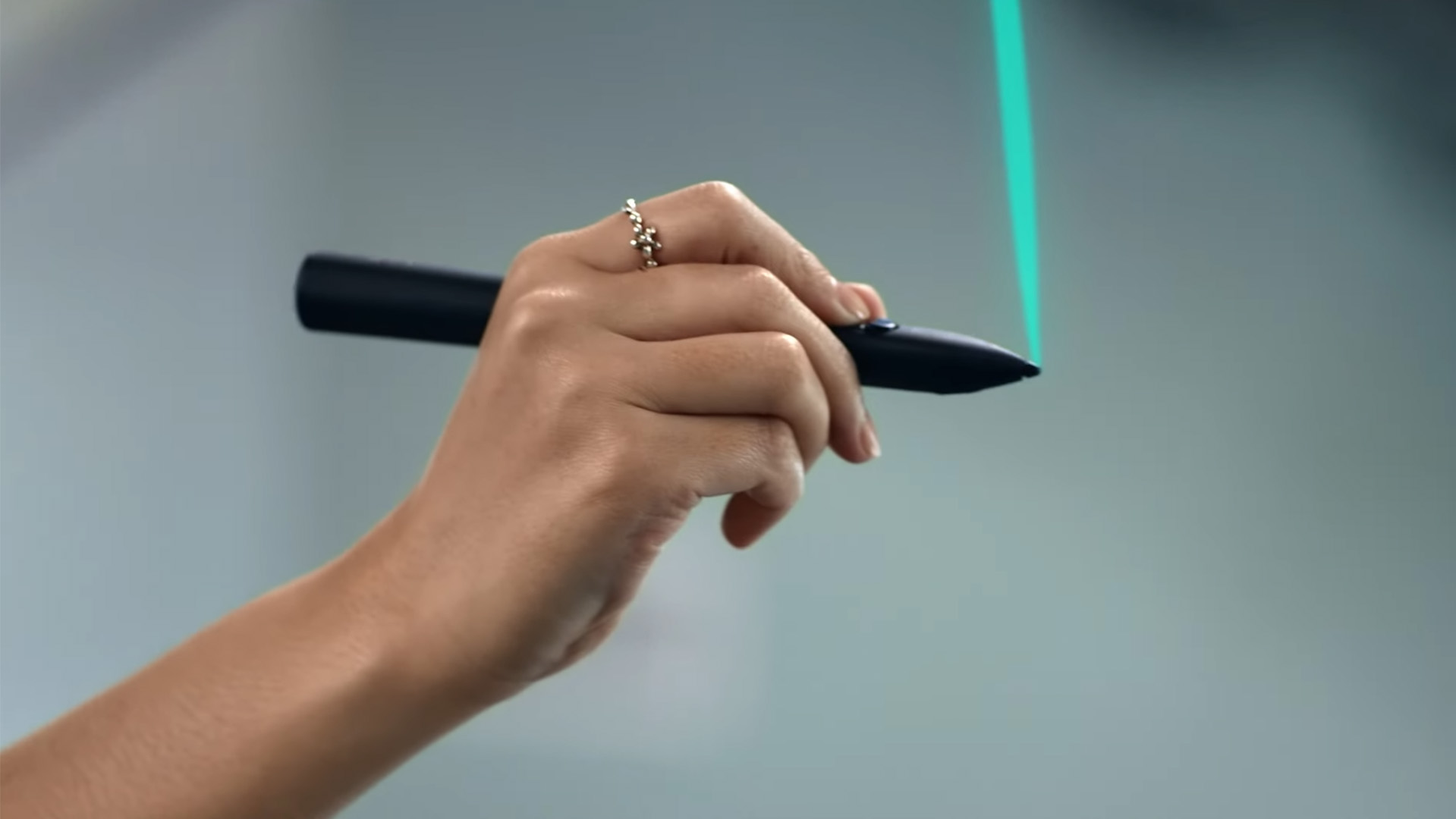Logitech's new MX Ink stylus might be a dream art tool for your Meta Quest headset
Offers better precision controls than the native controllers

Logitech has recently unveiled its first mixed reality stylus, and it's exclusive to the Meta Quest series. Known as the MX Ink, it's designed to give people a more precise way to create and draw when wearing a Meta headset. While you can utilize the native controllers for content creation, they simply don’t offer the same level of accuracy as a stylus.
One of the first things you’ll notice looking at the MX Ink is it’s quite large, resembling a marker more than a pen. It measures 6.46 x 0.72 inches (64 mm x 18.2 mm) and weighs a little over an ounce (28 grams).
By comparison, the Apple Pencil Pro measures 6.53 x 0.35 inches (166 mm x 8.9 mm) and weighs 0.68 ounces (19.15 grams). Logitech’s MX Ink has four buttons in total: three near the front and one in the back.
Say hello to MX Ink, the first mixed reality stylus for the @MetaQuestVR platform. Bringing familiarity and precision to MR, MX Ink helps you unleash creativity and drive productivity. Learn more at https://t.co/htWgfJZmjA pic.twitter.com/vh3buiuYFWJune 17, 2024
The frontmost button lets you grab objects in the mixed reality space to drag around, while the middle option allows users to alter the pen’s pressure sensitivity. Behind that is an Options button for configuring the stylus. Lastly, the button all the way at the end gives access to the headset’s Meta menu.
Logitech claims they developed the MX Ink to be “optimized for precision” as it reportedly has “low-latency on par with Meta Quest controllers.” Thanks to the haptic feedback, the stylus offers an immersive experience meant to mimic what it is to use an actual pen on paper.
Mode of operation
The MX Ink works under two modes of operation. First is 2D Tableau, which allows Meta Quest owners to use the stylus on a flat surface when drawing. It’s unknown if the mode works on any flat surface or if you need the MX Mat accessory.
Logitech’s demo shows someone illustrating on a wooden table, but the sheet of paper is sitting on the mat – not the natural surface. The mat appears crucial, but the same video shows a woman drawing on a canvas.
Get daily insight, inspiration and deals in your inbox
Sign up for breaking news, reviews, opinion, top tech deals, and more.
Or perhaps she’s using the other operation mode – 3D Sculpting. This allows you to freely create just by drawing in the air. The same demo displays multiple use cases, from building a house in a 3D environment to tracing the outline of what appears to be a snowboarding boot.
Other notable features include swappable tips and a seven-hour battery life. You can recharge it by plugging it in using a USB-C cable or purchasing the MX Inkwell combo to get a charging dock for the stylus.
Supporting apps
The company states you can use the MX Ink and the paired Quest controllers simultaneously, and you won’t be forced to disconnect them. It’s important to note that the stylus is only compatible with the Meta Quest 2 and Quest 3 headsets. Logitech told RoadtoVR it won’t work on the Quest Pro, and we've reached out to the company for comment, as they didn’t explain why that support is missing.
Additionally, the pen doesn’t work across all of the Quest library; just a handful of art apps. This includes Gravity Sketch, ShapesXR, and Arkio for now, but it’s possible we could see more added to the list. Logitech is offering third-party developers the opportunity to integrate MX Ink into their apps by applying for a developer kit.
The MX Ink launches in late September 2024 for $129.99 or $169.99 for the Inkwell combo. You can sign up to receive notifications letting you know when it’s available for purchase.
In the meantime, check out TechRadar's list of the best VR headsets for 2024.
You might also like

Cesar Cadenas has been writing about the tech industry for several years now specializing in consumer electronics, entertainment devices, Windows, and the gaming industry. But he’s also passionate about smartphones, GPUs, and cybersecurity.